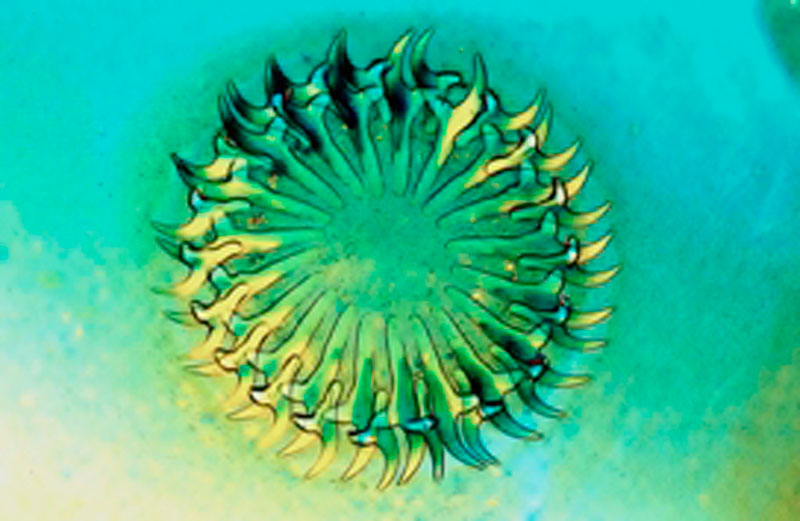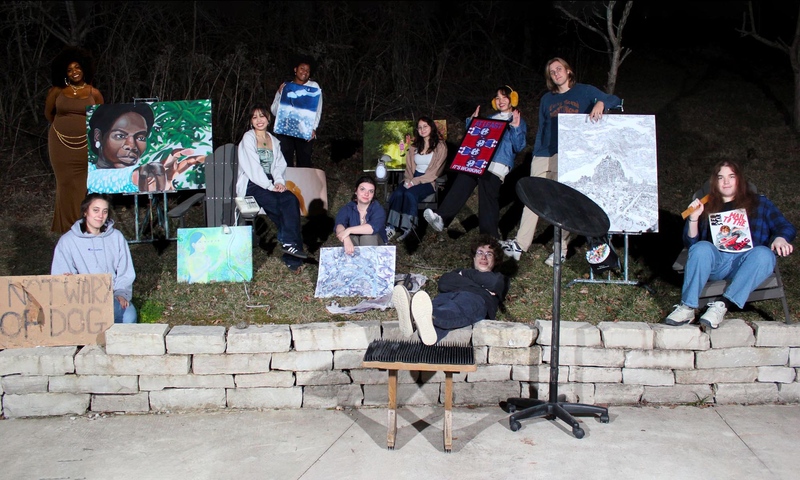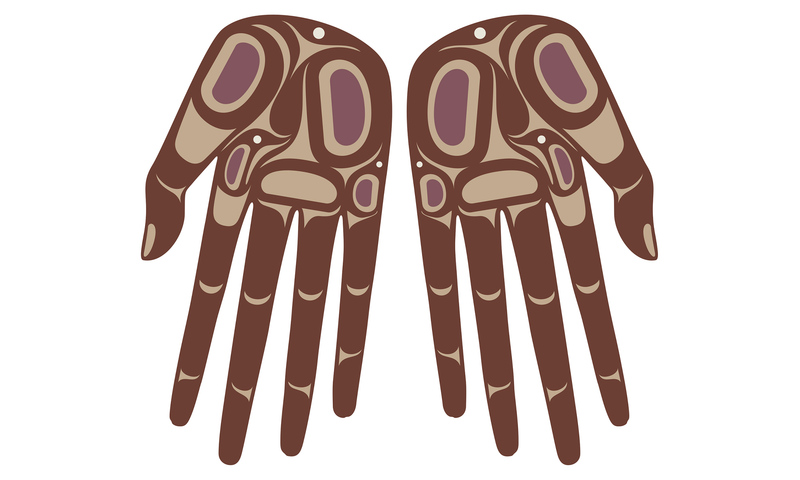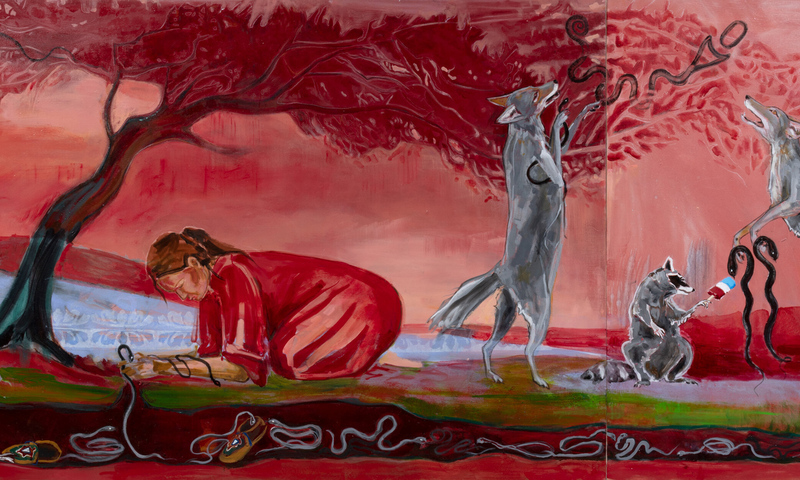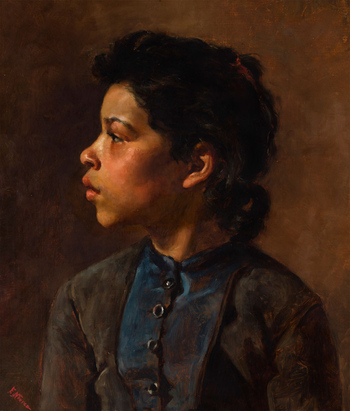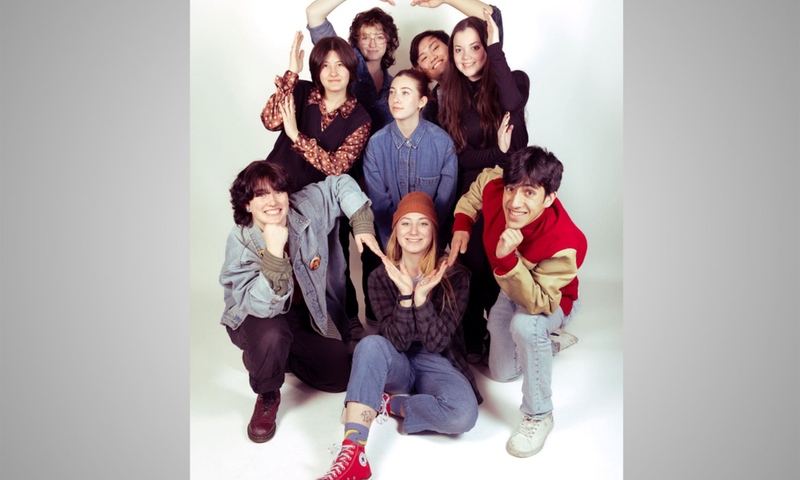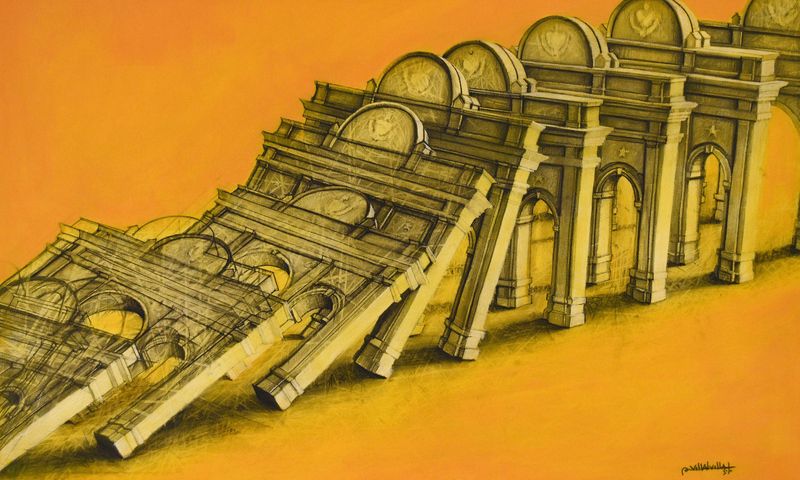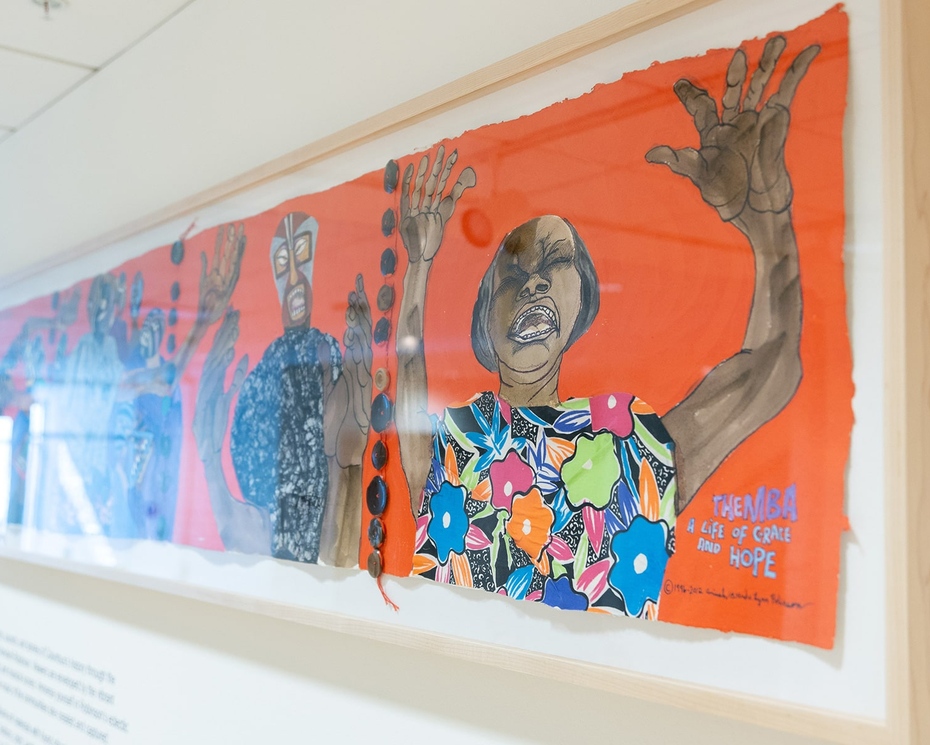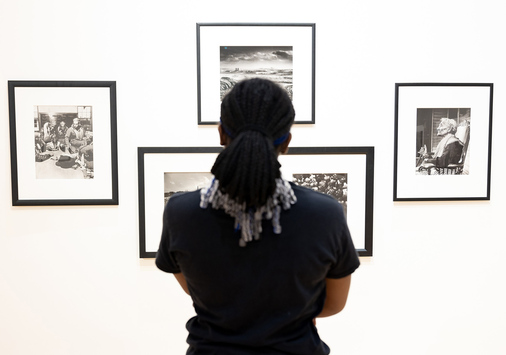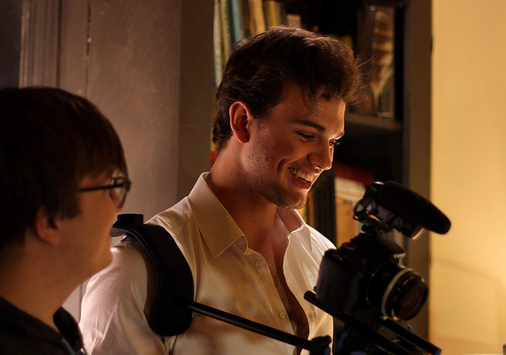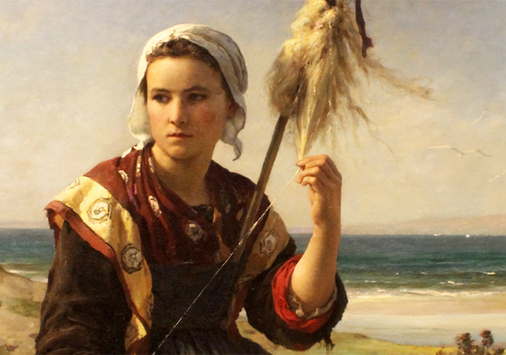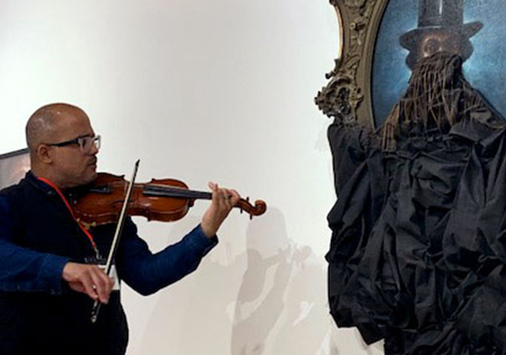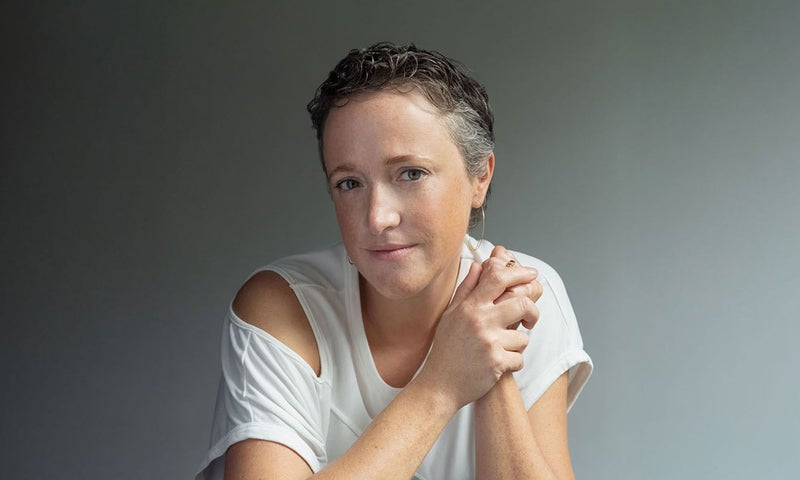The Art of Science
Scolex (head) of Cysticercus psiformis (tapeworm) (100x) Christian Gautier BIOS/PHONE Photo Agency Paris, France.
| Location: | |
| Ticket Info: | Free |
| Open to Public: | No |
This show explores the boundaries where the disciplines of art and science overlap. Alexandra Green, acting museum director and coordinator of the exhibition, comments that, “The primary purpose of the show is to blur the boundaries between art and science, suggesting that nothing is as compartmentalized as the division of disciplines often makes things seem. The connections between art and science are illustrated by putting together a visually striking and educationally useful display. In addition to presenting compelling information to the Denison and surrounding communities, I further intended that the exhibition be useful for art and science classes. The exhibition demonstrates that learning about a wide variety of topics, including science, can be done in a museum context.”
The exhibition is composed of several different sections. In the entrance room of the Museum is a display of physics lecture demonstration apparatus, dating from the nineteenth century. Adjacent to the antique equipment lies a case of insects and crayfish, both members of the Phylum Arthropoda. These specimens serve as the starting point for displays produced by the departments of biology, chemistry, physics, and psychology, which show how each discipline would study arthropods, often using techniques that create visually compelling images.
In the Museum’s largest exhibition area, tying in with the Denison annual theme of Harmony and Dissonance, a video, photographs, and installation art illustrate the concept of scale – from the very large to the infinitesimally small. Large-scale images and highly magnified images from the natural world, the latter drawn from the annual photomicrography competition Small World held by Nikon, represent the two extremes, as does the film, Powers of 10, which plays continuously. An installation piece by artist, Stacy Levy, further demonstrates how the issue of scale can be reflected in objects that have less extreme dimensions.
Another space is devoted to how art historical research and scientific analysis can be combined to develop a more complete understanding of art. Two students, Cara Lovati and Stephanie Rozman, a sophomore and junior at Denison University, respectively, have used a variety of scientific techniques and art historical research in an attempt to date a European oil painting in the Denison collection and determine who painted it. Working with the Intermuseum Conservation Association and Newark Imaging Center, they had the painting X-rayed and scanned with infra-red and ultra-violet light. Assistant professors Laura Romano and Warren Hauk in the Biology Department have facilitated the analysis of the fibers of the painting’s canvas and the wood stretcher on which it is mounted.
Participants in the exhibition include Paul Andreadis, visiting assistant professor of Biology, Kimberly Coplin, associate professor of Physics and associate provost, Thomas Greenslade, Jr., emeritus professor of Physics at Kenyon College, Peter Kuhlman, associate professor of Chemistry, Nestor Matthews, assistant professor of Psychology, Kristina Mead, assistant professor of Biology, Michael Mickelson, emeritus professor of Physics, Thomas Schultz, professor of Biology, and Wesley Walter, associate professor of Physics. The four science departments have generously contributed materials to the exhibition.
The exhibition is accompanied by various events, including lectures, museum talks, workshops, movies, and the Conservation in Action program. Nikon generously assisted with funding and supplied images for the exhibition. The McGregor Connections Initiative contributed funding for the Stacy Levy Workshop. The Denison Film Society and the Cinema Department are sponsoring an evening of short films.
